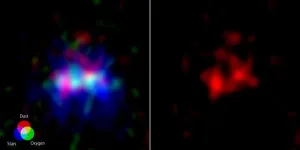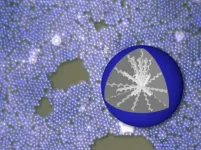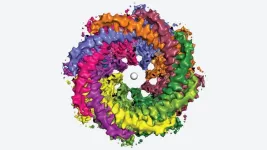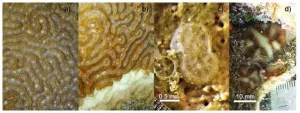A team led by researchers at the Mechanisms of Inherited Kidney Disorders (MIKADO) group at the University of Zurich (Zurich, Switzerland) has used Insilico Medicine’s generative artificial intelligence (AI) target discovery engine, PandaOmics, to identify actionable drug targets for the lysosomal storage disease cystinosis and to validate them in preclinical models of the disease. These results, which open new therapeutic possibilities for this devastating disease, were published June 14 in the journal Nature Communications. Collaborators include scientists from Microsoft Research-University of Trento Centre for Computational and Systems Biology in Italy, the Cystinosis Research Foundation (Irvine, CA) and the Program Innovative Therapies in Rare Diseases (ITINERARE) in Zurich.
Cystinosis is a rare genetic disease characterized by inappropriate storage of the amino acid cystine in cells, posing a lifelong threat to the body of those affected. Nephropathic cystinosis stands as the most common and severe form of the disease, typically emerging in infancy. The relentless accumulation of cystine slowly destroys the body’s organs, causing kidney failure, diabetes, hypothyroidism, myopathy, and central nervous system deterioration. There are currently no curative treatments for children with cystinosis.
Amino acid transporters play a vital role in facilitating the movement of essential nutrients across the membrane of lysosomes, specialized vesicles that play an essential role in handling nutrients and regulating cellular metabolism. Cystinosis is caused by mutations that invalidate the cystinosin (CTNS) transporter, causing cystine to accumulate, and driving lysosomal storage disease that damages multiple organs, including the kidneys. Scientists suspected that the mechanism responsible for the cell damage was connected to the regulation of rapamycin complex 1 (or mTORC1), an evolutionary conserved protein controlling cell growth and geroprotective signaling pathways that promote healthy longevity.
In the study, the researchers used the PandaOmics platform as a novel way to prioritize disease-target associations and prioritize actionable (drug) targets in cystinosis cells. The AI-based analysis predicted that mTOR leads a ranked list of actionable drug targets. The researchers then extended these unbiased approaches by cross-species validation in preclinical models of cystinosis and mechanistic in vitro studies in cellular systems. These findings indicate that hyperactive mTOR signaling drives the dysfunction of kidney tubular cells and is a targetable pathway in cystinosis, so the researchers conducted experiments to confirm its therapeutic effectiveness. Tested on cellular systems and animal models, such as rat and zebrafish, the researchers found that treatment with the Food and Drug Administration (FDA)-approved therapeutic rapamycin restores the degradative activities of the lysosomes and ameliorates the dysfunction of kidney tubular cells – the earliest telltale manifestation of the disease. These results identify mechanisms and therapeutic targets for dysregulated homeostasis in cystinosis.
“We are very pleased to have the first findings emerge from this important collaboration,” says Insilico Medicine founder and CEO Alex Zhavoronkov, PhD. “Our AI platform has provided new insights into cellular and molecular pathways that drive life-threatening complications in cystinosis that we hope will ultimately lead to new treatment options for cystinosis patients.”
The research collaboration between Insilico and MIKADO was first announced in March 2022.
“Cystinosis is a commonly neglected disease with a large unmet need. With the power of artificial intelligence-driven, systems biology-based drug discovery, we have unlocked new understanding of cystinosis disease and accelerated the discovery of actionable drug targets, with the goal of bringing novel breakthrough medicines to patients,” said Professor Olivier Devuyst, MD, head of MIKADO group at the UZH.
“Ultimately, we want to improve the quality of life for those affected by the disease and bring tangible hope to thousands of cystinosis patients around the world,” said Dr. Alessandro Luciani, principal scientist and team leader at MIKADO at UZH.
About Cystinosis
Cystinosis − one of a family of approximately 70 rare inborn diseases of the metabolism known as lysosomal storage diseases that collectively affect 1 in 5,000 live births − is caused by inactivating mutations in the CTNS gene encoding the proton-driven transporter cystinosin, which exports cystine from the lysosome. Its functional loss leads cystine to accumulate within the lysosome of tissues across the body, culminating in severe multiorgan dysfunctions that affect primarily the brain, eyes, liver, muscles, pancreas, and kidneys. Fanconi syndrome is the first manifestation of cystinosis, usually presenting within the first year of life and characterized by the early and severe dysfunction of the kidney proximal tubule, most often complicated by chronic kidney disease and life-threatening manifestations. In their second to third decade of life, patients with cystinosis can also develop hypothyroidism, hypogonadism, diabetes, myopathy, and deterioration of fine vision and decline of the central nervous system. Beyond supportive care, the only available FDA-approved strategy to counteract cystine storage is the oral administration of cysteamine, which allows cystine to exit from the lysosomes. However, cysteamine treatment is hampered by side effects and poor tolerance, and it does not prevent nor treat PT dysfunction and kidney disease. Therefore, there is an urgent need to develop novel therapeutics for this devastating disease.
About Insilico Medicine
Insilico Medicine, a clinical stage biotech company powered by generative AI, is connecting biology, chemistry, and clinical trials analysis using next-generation AI systems. The company has developed AI platforms that utilize deep generative models, reinforcement learning, transformers, and other modern machine learning techniques for novel target discovery and the generation of novel molecular structures with desired properties. Insilico Medicine is developing breakthrough solutions to discover and develop innovative drugs for cancer, fibrosis, immunity, central nervous system diseases, infectious diseases, autoimmune diseases, and aging-related diseases. www.insilico.com
About MIKADO group
The group Mechanisms of Inherited Kidney Disorders, led by Dr. Olivier Devuyst and Dr. Alessandro Luciani, is investigating the fundamental mechanisms that cause inherited kidney disorders affecting the epithelial cells lining the kidney tubule, leading to chronic kidney disease (CKD) − one of the fastest growing diseases worldwide and a major public health burden. Combining human genetic studies with innovative model organisms (e.g., rat and zebrafish) and physiologically relevant cellular systems, and integrating them with OMICs technologies and cutting-edge screening assays, we are applying the knowledge gained from fundamental studies of epithelial cell biology to develop disease biomarkers and novel therapeutics that might potentially improve the care for patients with genetic disorders affecting the kidney and other organs. The MIKADO group has established a zebrafish platform to perform high-throughput and high-content screens for kidney disease therapeutics, and a biochemical profiling platform adapted to microsamples (high-throughput screens coupled to clinical studies or metabolic studies in model organisms).
For more information, please visit https://www.physiol.uzh.ch/en/research/institutegroups/grdevuyst.html. Follow us on Twitter
END




